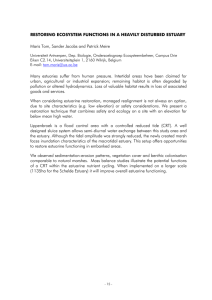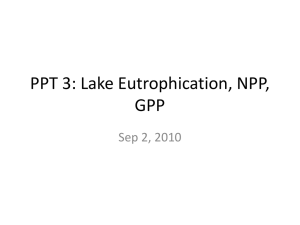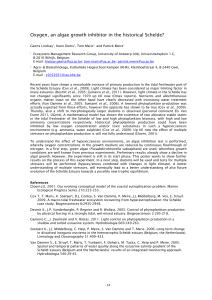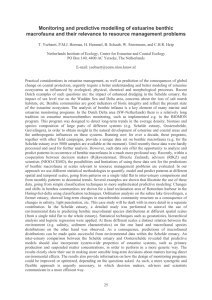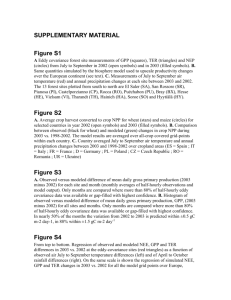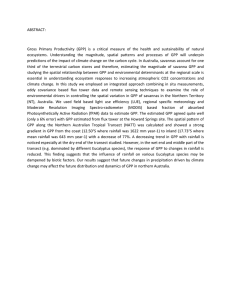Estimating primary production form continuous oxygen data in the Schelde Estuary
advertisement
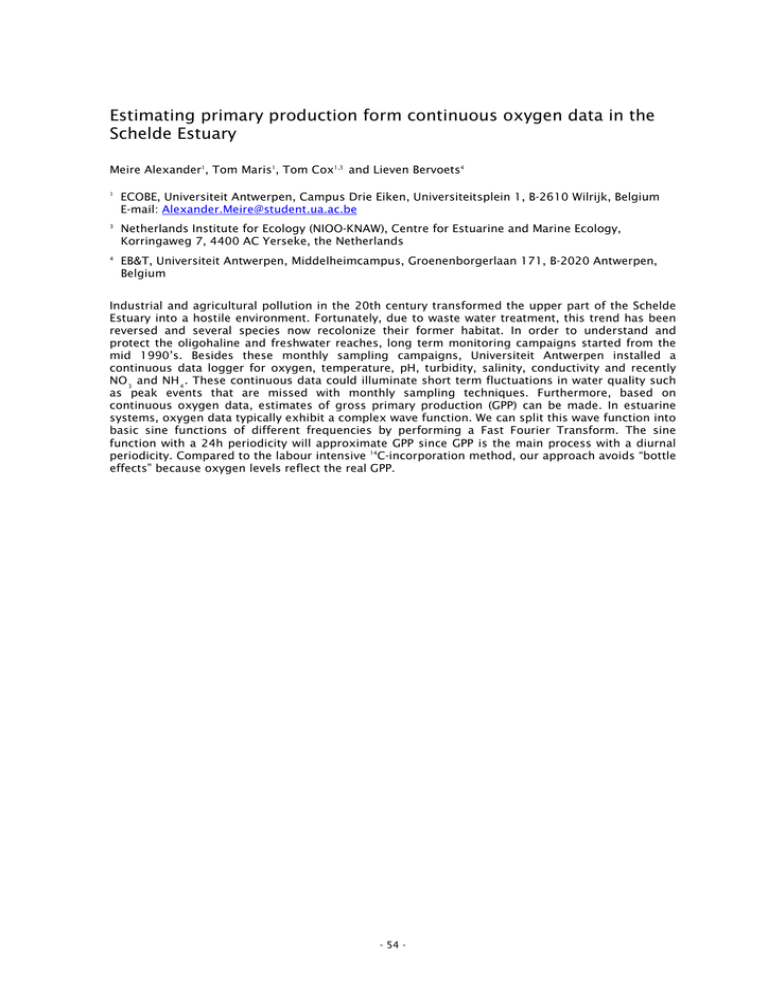
Estimating primary production form continuous oxygen data in the Schelde Estuary Meire Alexander1, Tom Maris1, Tom Cox1,3 and Lieven Bervoets4 1 ECOBE, Universiteit Antwerpen, Campus Drie Eiken, Universiteitsplein 1, B-2610 Wilrijk, Belgium E-mail: Alexander.Meire@student.ua.ac.be 3 Netherlands Institute for Ecology (NIOO-KNAW), Centre for Estuarine and Marine Ecology, Korringaweg 7, 4400 AC Yerseke, the Netherlands 4 EB&T, Universiteit Antwerpen, Middelheimcampus, Groenenborgerlaan 171, B-2020 Antwerpen, Belgium Industrial and agricultural pollution in the 20th century transformed the upper part of the Schelde Estuary into a hostile environment. Fortunately, due to waste water treatment, this trend has been reversed and several species now recolonize their former habitat. In order to understand and protect the oligohaline and freshwater reaches, long term monitoring campaigns started from the mid 1990’s. Besides these monthly sampling campaigns, Universiteit Antwerpen installed a continuous data logger for oxygen, temperature, pH, turbidity, salinity, conductivity and recently NO 3 and NH 4 . These continuous data could illuminate short term fluctuations in water quality such as peak events that are missed with monthly sampling techniques. Furthermore, based on continuous oxygen data, estimates of gross primary production (GPP) can be made. In estuarine systems, oxygen data typically exhibit a complex wave function. We can split this wave function into basic sine functions of different frequencies by performing a Fast Fourier Transform. The sine function with a 24h periodicity will approximate GPP since GPP is the main process with a diurnal periodicity. Compared to the labour intensive 14C-incorporation method, our approach avoids “bottle effects” because oxygen levels reflect the real GPP. - 54 -
